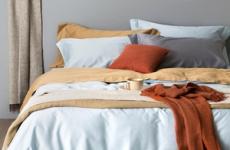Design of plasterboard walls in an apartment. Decorative plasterboard structures in the apartment
Plasterboard structures occupy a special place in modern interior, as they are an original addition to any setting. From this material you can make both simple and complex models, ranging from pieces of furniture to partitions and ceilings. Drywall is simple and versatile to work with, so it is quite possible to create unique elements from it with your own hands, without having specific skills for this. In addition, the material is presented various types, which allows it to be used in rooms regardless of their temperature and humidity levels.


Peculiarities
Drywall is considered a unique building material, which is produced in the form of sheets. Thanks to its special structure and flexibility, it can be applied to any surface, decorating the interior of rooms with interesting design ideas. The most popular plasterboard designs are dropped ceilings and arches. Since the material is lightweight, it does not require additional surface strengthening and is quickly installed. To make shaped parts from it, it is enough to first draw diagrams, cut elements according to them and fix everything.


main feature drywall is that when wet it easily changes shape. Thanks to this quality, it can be used not only to implement any ideas in the interior, but also to level surfaces.
If we consider the advantages and disadvantages of plasterboard structures, it is worth noting that they have many advantages:
- create smooth coatings; after finishing, the material acts as an ideal base for painting, ceramic tiles and wallpaper;
- allows the production of parts various forms;


- high breathability and environmental friendliness;
- good sound and heat insulation;
- fire resistance and strength;
- affordable price.


Despite its positive characteristics, drywall also has one drawback - it is fragility. Therefore, it is not recommended to install it on walls that are subject to mechanical stress.


Kinds
Plasterboard structures are boxes lined with sheets and decorated with decorative cladding. They are used for indoor design, the result is beautiful interior, and the rooms are filled with home comfort. Plasterboard compositions can be complex, simple, curved, smooth and enclosing.
Depending on the scope of their use, they are distinguished the following types designs.
- Ceilings. In order to level the ceiling slabs, simple single-level systems are installed. If you need to decorate the room in an original way, then choose multi-level ceilings consisting of many shaped inserts, lighting and stretch fabric.


- Walls. Plasterboard sheets can be used as a simple finish and hide all surface defects, or you can use decor and create chic partitions for zoning a room. In addition, “full” walls are also constructed from this material, which help separate one room from another.
- Arches. Recently, decorative arches have become very popular, which, unlike ordinary interior openings, can have a trapezoidal, rounded or rectangular shape. Arches in the form of an ellipse, as well as those installed in a semicircle, look beautiful


- Furniture. Drywall is often made from bookshelves, shelving and special niches in the walls. In addition, it is also possible to create a bar counter, a wardrobe and a small wall for the hallway or living room. Furniture made from such material is not only stylish, but also multifunctional. At the same time, for rooms with high humidity it is recommended to use moisture-resistant sheets; from them you can build shelves for storing things or a niche for equipment in the kitchen.
- Decorative boxes. They are mounted to hide cables and various communications. Drywall perfectly aligns window and door slopes or close the ventilation system.
- Decor. Since this construction material easy to finish, it is often used for the manufacture of columns, false fireplaces and geometric niches.


Dimensions
Typically, plasterboard sheets are produced in a standard size of 2500*1200*12.5 mm. In addition, many manufacturers produce sheets 1.2 m wide and 2 to 3.6 m long. The thickness of plasterboard can also vary from 6.5 to 12.5 mm. To choose the right material, you need to know not only its dimensions, but also take into account the type of surface that you plan to cover with it. For example, to create parts of a complex design, it is recommended to purchase arched plasterboard; its thickness does not exceed 6.5 mm, thanks to which the product can bend to any radius.
In the case when it is necessary to build partitions, niches or level walls, then it is better to give preference to wall plasterboard, the thickness of which is 12.5 mm. As for the installation of ceiling structures, ceiling plasterboard with a thickness of 8 to 9.5 mm is ideal for them. It looks no different from ordinary material, but is light in weight.

Colors
Drywall is produced in a wide range; it is considered one of the most popular materials in construction. Each type of product differs not only in its size, but also in its properties and technical indicators. When you go shopping for drywall, you need to pay attention to the fact that it is sold in different colors, which indicate the properties and scope of the material. It is worth noting that color does not affect appearance finishing.

Gray drywall is usually chosen for installation interior partitions and for leveling walls, it is made of cardboard and gypsum with a thickness of 12.5 mm. It is considered the cheapest option for covering surfaces in rooms with normal humidity and temperature conditions. Green leaves are characterized by increased level moisture resistance, therefore they are recommended for installation in rooms where air humidity exceeds 70%. Red and pink plasterboard is highly resistant to fire; it is used for cladding ventilation systems and fireplace structures. The presence of yellow color on the surface of the material means that it can be used for cladding facades and bases that are constantly exposed to negative impact moisture, sunlight and drafts.

Style and design
Made from plasterboard sheets various designs, who perform not only original decoration interior, but also allow you to divide or combine several zones in the room. Recently, in many apartments you can find arches; they are a stylish transition between rooms and, unlike ordinary doorways, fit harmoniously into all design styles. To give this design a complete look, it is additionally decorated with wallpaper or masonry.


There are also many design options for plasterboard niches. Their design can have different depths, sizes and shapes. Various decorations in the form of figurines, flowers, vases and toys will help add aesthetics to the niches. In addition, their finishing includes the installation of lighting and colored glass. In the kitchen and bathroom, walls lined with plasterboard are usually finished with ceramic tiles or materials simulating stone or brick.


How to choose and make it yourself
Before placing plasterboard structures in a renovated room, you need to draw up an accurate diagram indicating the dimensions and location of the parts.
Assembling the elements with your own hands is not difficult, but it is advisable to do this while adhering to certain rules, the following step-by-step instructions will help you with this.
- The first step is to determine the center of the room and mark the guides. Then the profiles are attached to the places indicated in the diagram. For installation, the profile arches are additionally strengthened with racks, observing a step of 20-30 cm.
- At the second stage, the upper guides of the structure are fixed.



- The next step in the installation is to work with sheets of drywall, from which the necessary structural parts are prepared. Before bending the material, it must be moistened with water, this will allow you to obtain the maximum radius of the figure.
- The final stage. The protruding remains of the material are cut off with a knife and the resulting part is puttied. In order for the structure to acquire a flat and smooth surface, it must also be treated with a primer and all seams must be carefully sealed with putty.


Depending on the type of room, various design ideas are used in the form of installing a suspended ceiling, niche or partitions. Using plasterboard, the interior can be decorated in the following rooms:
For the living room
If the room has high ceilings, then multi-level hanging structures that can be decorated with various colored inserts and artistic painting. In a small plasterboard room, it is recommended to create a niche for a TV, into which you can also build an aquarium. Plasterboard shelves, which can be installed near the sofa and equipped with lamps, also look unusual in the living room.



To the bedroom
This room requires a special approach to design, so its interior should contain simple figures and clear lines. In the bedroom, plasterboard will look original not only on the ceiling, but also on the wall. It’s good for them to decorate the head of the bed, creating a false wall and decorating it with profiles under wooden beam. You can also make stylish bedside shelves and nightstands from sheets of plasterboard; with bright lighting, they will create a romantic atmosphere in the room.



In bathroom
To cover surfaces in the bathroom, you must use only moisture-resistant material. Plasterboard structures in this room may be different. If the room is small, then you can install a hanging system of a simple design in it or cover only half of the ceiling and the sink with it. At the same time they look gorgeous ceiling structures with LED backlight.


For the hallway
The interior of this room can be originally complemented by any plasterboard structure, the choice of which largely depends on the area of the room. As a rule, they are installed in hallways arched structures, which allow you to create modern design. In addition, in such rooms there are often multi-level ceilings and false walls made of plasterboard.


To the kitchen
Since a lot of steam is released in the kitchen during cooking, its finishing must be made from moisture-resistant plasterboard sheets. You can use it to build both partitions and make corner cabinets. A plasterboard structure such as an arch is also well suited for the kitchen.


Necessary tools and components
Decorative parts made of plasterboard are an original decoration of any interior, but in order to install them, it is necessary to choose the right material and also the appropriate tools. To securely fasten the structure, it is placed on a frame, for the manufacture of which a cutter 0270 and metal U-shaped profiles from 3 to 6 meters long are used. In addition, to create a frame, guides and support profiles are also required, thanks to which you can form the desired angle of the metal structure under the gypsum board.


As for additional fasteners, these include hangers, screws and dowels. The structures are sheathed using SP 55 101 2000 sheets. Since the structural parts must have the correct size, they are cut using a knife. Also, to work with drywall you will need a tape measure, a level, a needle roller and a ruler.

To renovate the premises upon completion finishing works I was pleased with the quality result; covering surfaces with plasterboard must be done correctly. This also applies to the installation of plasterboard structures.
If you do the interior design yourself, you must follow the following recommendations.
- It is necessary to use plasterboard for finishing, which has a smooth surface. If microcracks are noticeable on the sheets, then such material is considered unsuitable for work.
- Installation should be performed in a room with a temperature not lower than +10C.
- It is necessary to cut sheets in a respirator and glasses.

Plasterboard structures in the interior are a real trend in the field of design. With their help, you can hide defects in uneven walls and ceilings, disguise communications, and turn a standard apartment into an elite one. The possibilities of drywall are extremely diverse - you can create the desired structure with your own hands, without the help of professionals.
What types of plasterboard structures are there?
Plasterboard structures are appropriate in any residential and non-residential premises:
- in the living room;
- bedroom;
- children's;
- office;
- toilet and bathroom;
- kitchen;
- hallway;
- corridor;
- closed loggia or balcony;
- terrace.
Among the popular designs from gypsum plasterboard:
- single and multi-level ceilings;
- interior partitions;
- podiums;
- floor decorative stands;
- cabinets;
- convex and concave figures;
- columns;
- projections;
- imitation fireplaces;
- racks;
- shelves;
- arched openings in walls, between rooms, around windows.
You can see what plasterboard structures look like in the interior in photos in magazines and on websites dedicated to renovation and design.
The functionality of plasterboard structures in small apartments
Small apartments are known for their inconvenience due to poor layout and lack of space sufficient to accommodate standard furniture sets. These shortcomings can be leveled out using plasterboard structures.
- Wall niches, openwork partitions, and shelving will help you get by with a minimal set of furniture and equipment without overloading the room with unnecessary details. A flat-screen TV fits well into a large niche in the wall; flower vases, figurines, and sculptural compositions look great on decorative shelves.
- Convert one-room apartment in a two-room apartment you can use a volumetric partition made of plasterboard with internal shelving, which has enough space for bed linen, clothes and shoes, books and albums.
- In the bedroom, ergonomic organization of space is especially necessary, since excess furniture and cramped spaces significantly reduce the volume of air, which interferes with rest and restful sleep. Instead of huge bedroom sets in a Khrushchev-era apartment, it is wiser to limit yourself to a large, comfortable bed, and along the walls to place narrow wall shelves and plasterboard cabinets, convenient for storing bed linen and items of clothing.
- and niches, cabinets and partitions help to gain several meters of usable space in the nursery. In the baby's room, securely fastened, safe multifunctional structures look great, in which you can place everything you need. Bright fragments of your favorite cartoons, placed on shelves with internal lighting opposite the crib, will help your child overcome night fears.
- A computer desk by the window in a teenager’s room goes well with a small niche in the wall into which the monitor is placed. On the shelves inside the partition you can place books, notebooks, writing instruments, models of fantasy ships and car models.
Built-in spot and LED lighting sources fit perfectly into wall and ceiling structures.
How to fit plasterboard structures into small kitchens and bathrooms
Lightweight plasterboard structures play an important role in organizing the space of a small kitchen, where shelves built into the walls perfectly replace large cabinets for dishes, food, and kitchen equipment. Suspended, wall and floor structures made of waterproof plasterboard visually expand the room and do not interfere with the penetration of natural light.
Wall niches and shelves made of plasterboard will help save space in a tiny hallway, replacing bulky hangers, bulky cabinets and shoe cabinets.
Tiny bathrooms and toilets, like combined bathrooms in Khrushchev-era buildings, do not accommodate even a small part of the furniture sets, although for convenience, containers for linen, cabinets for cosmetic and hygiene products, washing powders and other items are needed. The interiors of small bathrooms and toilets can be supplemented with:
- spacious ergonomic wall racks made of plasterboard:
- narrow floor cabinets;
- hanging shelves for cosmetics, equipped next to a niche for a mirror.
Plasterboard structures - stands for ornamental plants, cabinets for storing equipment and various small items - can be placed on a closed balcony or loggia.
Important! On normal open balcony It is better to avoid plasterboard products, since even the most waterproof plasterboard will warp under the influence of sudden changes in temperature and air humidity.
Design of plasterboard structures in large apartments
The advantages of large apartments are quite obvious. Huge areas will not lose anything when installing luxurious multi-level and combined suspended ceilings with mortise and hanging figured elements in the form of cubes, spheres, flower arrangements. Multi-level ceiling structures supported by columns built into walls or located separately in functional areas are extremely popular.
The types of plasterboard structures in the interior of a spacious living room, photos of which will help you create similar structures in your own apartment with your own hands, are extremely diverse. Based on the samples presented by the designers, you can come up with and create original project, which will make the interior unique.
It is not difficult to create such a design yourself. You will need to build a frame, and to give the profile an arched shape On its side edges, cuts can be made every 10-12 cm or more often if the bend of the arch is stronger.
Installation of the frame is not much different from a similar process with, for example. In order to give the drywall a curved shape, one of its sides together with the plaster is slightly moistened with water (you can first pierce the surface with a needle roller), and then applied to the pattern of the required shape. When the sheet dries, it will have the desired shape. Moreover, you can find on sale special type drywall, called arched. It has a minimal thickness (6.5 mm), making it easy to bend.
Before you start creating plasterboard shelves, it is better to very clearly imagine the end result, or better yet, depict it on paper. can have not only angular, but also curvilinear shapes, repeat some geometric figures, tree structure, etc. There can be a lot of implementation options, and several interesting examples are presented in the photo.
Niches are used for placing paintings, aquariums and other things in them. In a niche you can organize shelving system, using the same drywall.
Another interesting solution for organizing a niche is finishing the opening with colored glass and installing lighting.
No. 4. Plasterboard cabinet
Drywall allows you to build even some pieces of furniture, incl. cabinets, bar counters, and even... Such furniture is relatively easy to manufacture and allows implement any of your own requirements, it can be finished in any way you like, hidden ones can be added, and the cost of such solutions is low. The only negative is that it is stationary, but in the case of a wardrobe this disadvantage is insignificant, because ordinary built-in wardrobes also cannot be moved from place to place.
It’s not difficult to create a cabinet from plasterboard on your own. It all starts, as always, with creating a frame, and at this stage you already need know how the interior space of the future cabinet should be arranged: how many shelves and what height should there be, where will the hangers be located, etc. If the length of the shelves is higher than 1 m, it is better to strengthen the frame. In this case, a wardrobe made of plasterboard will not be inferior in strength to its counterparts made of chipboard. The fittings and facade can be used the same as for conventional sliding wardrobes– it won’t be clear from the outside what the cabinet is made of, but at the same time it will cost you less than usual, and it will be much easier to equip interior lighting in it.
No. 5. Decorative plasterboard partitions
Drywall is very often used to create interior partitions; it allows you to perfectly isolate mixed spaces, but now we are not talking about that. This material can be used rather than to divide space. This openwork partitions, which can have any necessary shape and be equipped with a mass of compartments in the form windows and shelves, allowing light to freely penetrate from one part of the space to another. Such a partition can have completely different functions: in addition to zoning itself, it can serve decoration or a kind of showcase, displaying items from a personal collection, awards, etc.
To create such a partition, you need to have a very clear idea of what the end result should be, and a very responsible approach to the construction of the frame and installation of drywall. As in all other cases, the structure can be decorated with built-in lighting.
No. 7. Slopes for windows and doors
No. 9. Headboard
Drywall can also be used to decorate the space above - with its help you can create completely different designs. You can build a frame of the required shape and size, cover it with plasterboard and decorate the resulting structure with fabric or. Such headboards can even go to the ceiling and be supplemented with lighting, being a real highlight of the relaxation room. You can get by without creating a frame, if you cover a sheet of drywall fabric or leather using padding polyester or foam rubber as a filler. If you want to use decorative buttons, then holes are drilled in advance in the designated places on the drywall, and the nylon thread with which they are attached is back side fixed with a stapler. 
No. 10. Plasterboard fireplace
Naturally, we're talking about about the construction of a fake one, which will not be connected to the chimney and in which it will be impossible to light a fire. Despite this, it will look very respectable, so it can create an atmosphere of romance in the room and will decorate the living room, office or library.

When it comes to creating truly original and unique designs on walls and ceilings, plasterboard is our everything. It copes with tasks that other finishing materials cannot do. Today, in the truest sense of the word, it has become possible to completely create interior design from plasterboard. Of particular value is its ability to create volumetric curved structures on any surface.


Ideas and examples of interior design from plasterboard
So, this finishing material is produced in the form of sheets made of gypsum and covered with durable cardboard, their standard sizes 250 by 120 cm, thickness - 8 - 10 mm. For the ceiling, thinner sheets are used. For finishing wet rooms - moisture resistant. Drywall is mounted on a frame made of special metal slats.



With the advent of this finishing material There was no longer any need to spend a long time and carefully leveling the walls with plaster. With its help, all this is done without water, dirt and dust. Other advantages of drywall as a material for creating interior design include:
- installs quickly and quite simply;
- low cost (on average 5-8 USD per 1 sheet);
- environmentally friendly and safe for health;
- you can come up with and implement almost any form of design;
- with its help, the ability to create exclusive step compositions that no one else will have;
- suitable for any interior style;
The only disadvantages that can be highlighted are:
- profiles on which drywall is mounted take up space, and this is a real problem for small-sized housing with low ceilings.
- Heavy objects cannot be attached to such structures. For example, hanging drawers or shelves. If such a need still exists, it is necessary to provide a frame in advance, even before installing the drywall, in the places where objects are supposed to be fastened. Most often, wooden blocks are screwed to the wall for these purposes.




The most popular surface in interior design, where plasterboard is used en masse, is the ceiling. There are quite a few ways to create an interesting and successful design for this largest and freest plane in the house. Drywall will help make the ceiling not only perfectly flat, but will also allow you to build a real multi-level art object. This material goes well with fabrics and lighting. In general, it provides ample opportunities for flights of fancy.



When it comes to wall decoration, plasterboard is not far behind. True, it is quite rare to come across compositions built simply for beauty, but niches, arches, and columns created with its help are very popular. It is also common practice in the interior to use plasterboard on the walls behind sofas and the headboards of beds.




No matter how wonderful drywall is, it cannot act as an independent finishing material. Simple gray sheets do not look attractive, so they need additional finishing other more aesthetic materials. The simplest thing is to putty and paint the surface, leaving it just flat, you can also use wallpaper, decorative plaster, ceramic tiles, decorative rock or brick.
Stepped multi-level structures, complemented by lighting, will become a decoration and highlight of any room, regardless of its style and functions. Having decided to create an interior design from plasterboard, you will receive a finishing material that fits perfectly into your home and everyday life with minimal investment of time, effort and money.


Ekaterina Domracheva

Time does not stand still, and whether you want it or not, the question is home renovation will affect you. There are many technologies and materials for comfortable and modern home improvement. But the editors "So simple!" advises you to opt for the good old drywall.
If you know how to use it and do it correctly, drywall can do a lot. With its help, you can create a brilliantly designed room from an ordinary room. multifunctional space. We bring to your attention 25 ideas for using this wonderful material in the interior.
Drywall interior
- A full-wall niche with shelves looks much more modern than the wall cabinets that we are already so tired of. You can place everything that is dear to your heart on the shelves, and it looks more harmonious and fashionable.
- Perfect for a children's room. Just don't waste your money and choose high quality drywall to avoid allergies.

- Using a plasterboard partition, you can turn one room into two or divide the space into zones.

- You can create an interior in oriental style.

- A very good solution for wall decoration. Friends will definitely appreciate it!

- A similar niche for the living room, which will accommodate everything you need. It is very convenient, and you can make it according to your own sketch.

- You can create a partition in the hallway and make it multifunctional with shelves.

- An interesting option for when you need to separate one living space from another. For example, the kitchen is from the living room.

- Very stylish solution for a spacious room.

- Simple and tasteful.

- Interesting solution, looks very unusual.

- This decor looks elegant due to the smooth lines.

- Create a starry sky in your bedroom.

- The cabinet partition is practical and goes well with the interior of the room.

- Decorative lattice partitions are very beautiful. Decorating them with candles can create a romantic atmosphere.

- Drywall can also be used for bathroom decoration.

- You can create a room of the future.

- A very unusual idea!

- Very warm and cozy decor.

- Cute and practical.

- With lighting, it's practically a work of art.

- And again wavy lines that evoke thoughts of relaxation.

- It will look original in a spacious living room.

- Even the arches look advantageous.

- No smooth lines, everything is strict and neat, but gives a feeling of warmth and softness.







